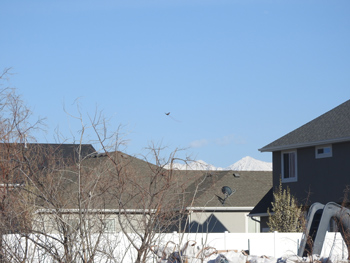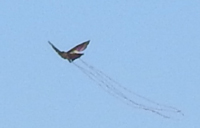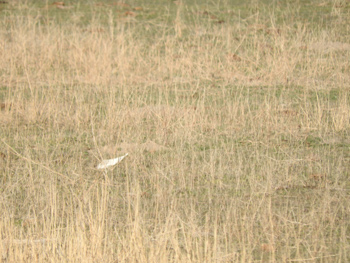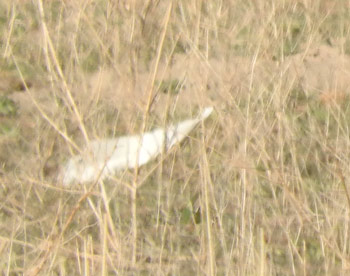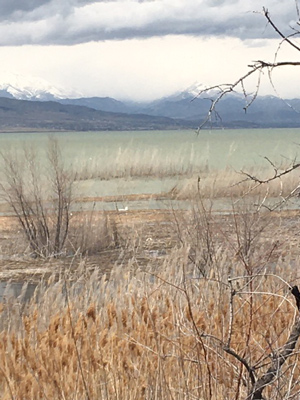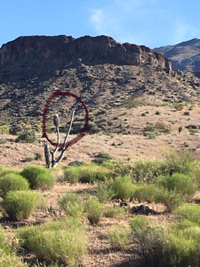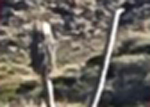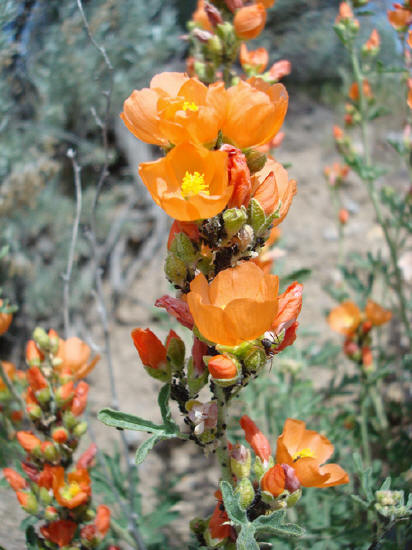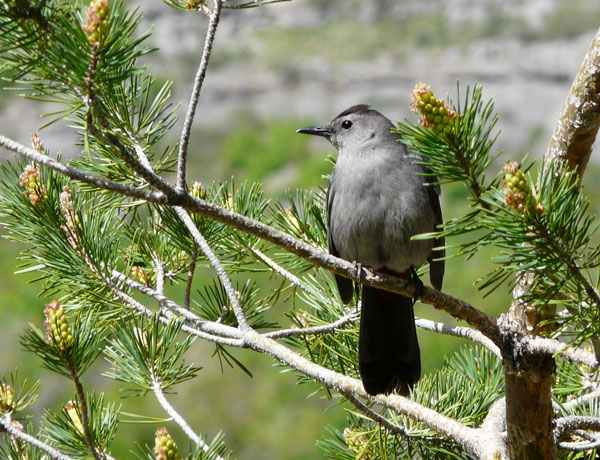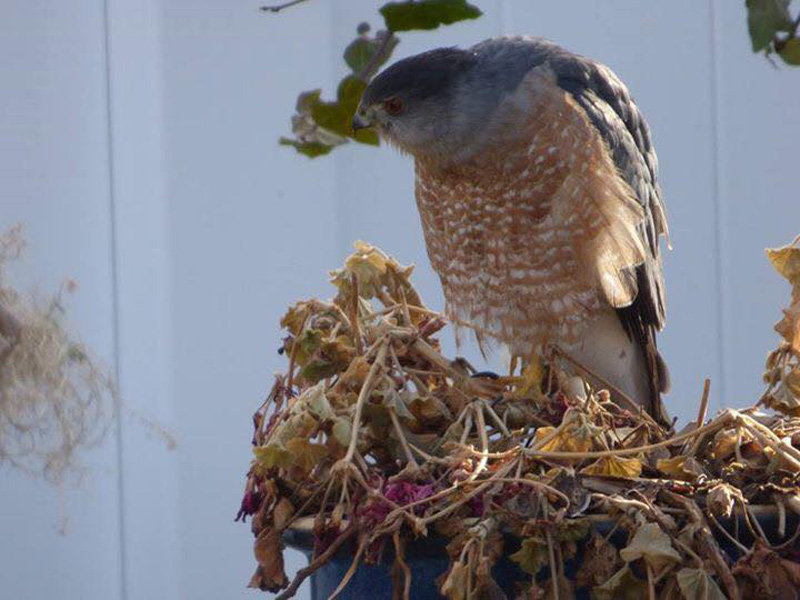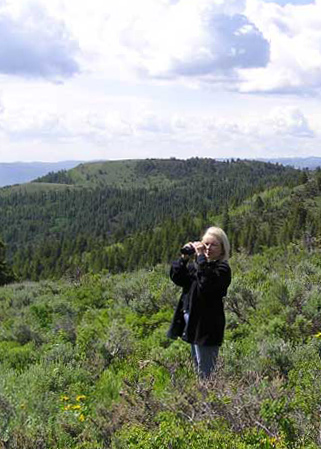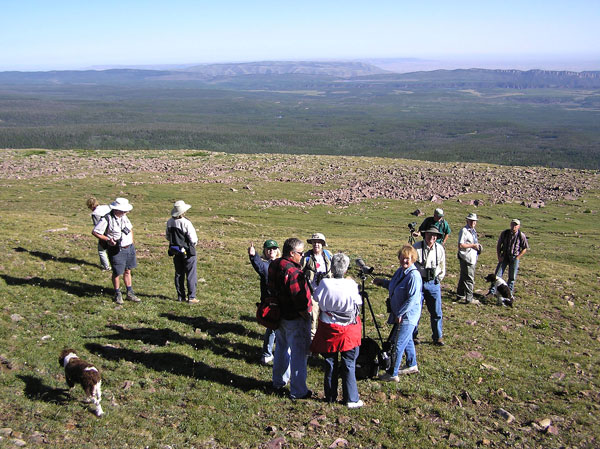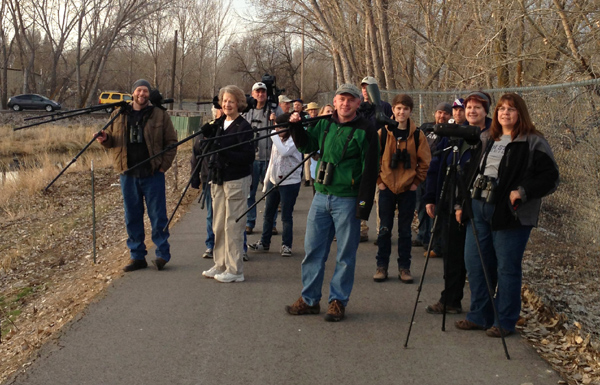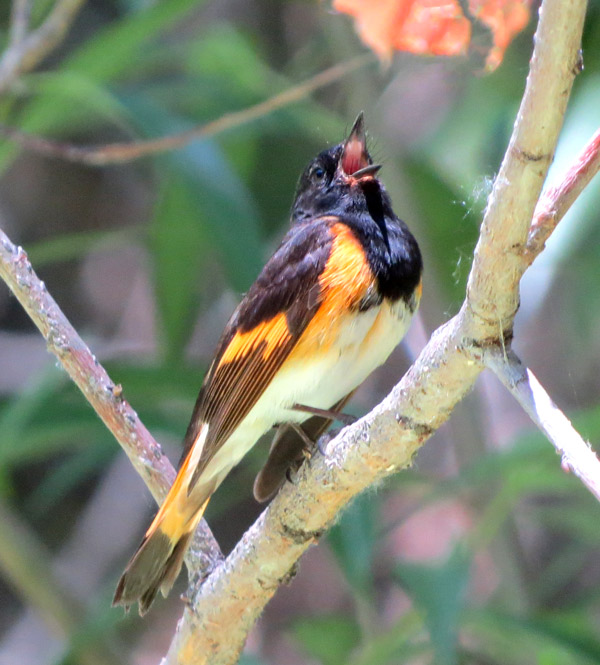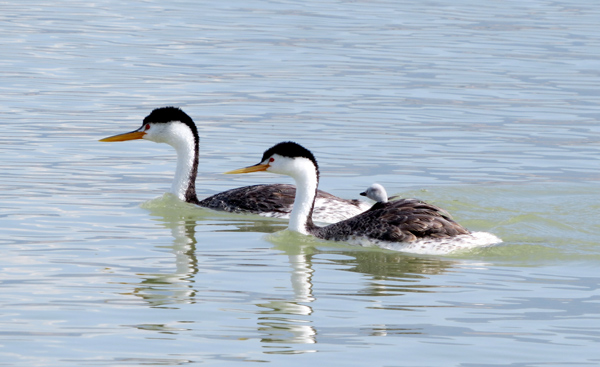|
In
selecting the bird species that I wanted to talk about this month, dozens of
ideas flew through my head. I wanted to choose a species that some birders
have seen, that is possible to see in the United States, but not something that
every birder has likely seen. I also wanted something that I had
photographed. So, taking that all into account---let’s talk about the Ringed
Kingfisher.
|
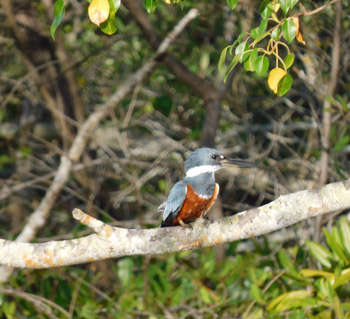
by Robert Parsons ©Robert
Parsons
|
The Ringed Kingfisher is the largest
kingfisher in the Americas. There are just over 90 kingfisher species
throughout the world, but only six in the Western Hemisphere. Most continents
have one well-known kingfisher, such as the Common Kingfisher in Europe or the
Belted Kingfisher here in North America. Southeast Asia and New Guinea have the
greatest diversity of kingfishers and of course the large and noisy Laughing
Kookaburra is well know from Australia. Most kingfisher species are similar in
structure but differ primarily in size, plumage and habitat.
Ringed Kingfishers measure about 12-15
inches in length and weigh about 8-9 ounces. It is in the Alcedinidae family
and is widespread throughout much of South America, Central America and Mexico,
and just barely extending its range into southern Texas.
Most birders love watching kingfishers,
sitting motionless on a perch staring intently at the water below for some
morsel of food, diving with amazing accuracy to grab a fish in its large and
stocky bill or chattering away as it flies quickly from perch to perch along
some water source. Like most kingfishers, Ringed Kingfishers are colorful,
noisy and conspicuous birds, making a loud cla-ak call as they fly with
choppy wing beats, in a quick and direct path but usually much higher than other
kingfishers, from one perch to another. The song is a low-pitched harsh
rattling. I saw my first Ringed Kingfisher in 2009, four years after I started
birding during a trip to Costa Rica. The pictures in this article were taken
during a birding trip at Laguna Coba in Mexico earlier this year.
|
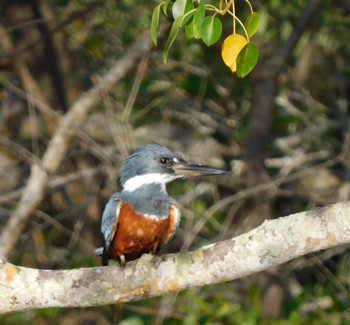
by Robert Parsons ©Robert
Parsons
|
Ringed Kingfishers are non-migratory, but
territorial birds, staking out an area with good food sources and convenient
perches along with a safe place to roost. They live along deeper rivers, large
streams, ponds and lakes with significant forested areas nearby. They are also
found around fresh water bodies in lowlands and in mangrove swamps along
coastlines. In Texas, they are most common along the Rio Grande, in areas
where tall trees and brush border the river or in some of the deeper nearby
ponds. They appear to be expanding their range
northward, further into the United States and although the first documented
breeding record in Texas didn't occur until 1970, they have become increasingly
common since then. Although uncommon, populations appear to be stable and
Ringed Kingfishers occupy a very large geographic range. The IUCN lists Ringed
Kingfisher as a species of “Least Concern.”
Ringed Kingfishers hunt for food by
perching higher than most kingfishers (usually 15-25 feet up) and watching the
water, sometimes for long periods of time. When prey is spotted close to the
surface, it plunges headfirst, sometimes up to 25 miles per hour, into the
water, catching the fish in its stout bill. They often bob their heads before
diving to help accurately judge the depth of the fish in the water. Unlike some
other kingfishers, Ringed Kingfishers seldom hover before diving. The
kingfisher’s diet consists of mostly small fish (5-7 inches long), but also
small lizards, snakes, amphibians and insects. They are most active in the
morning and evening.
|
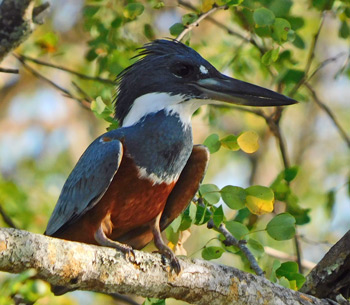
by Robert Parsons ©Robert
Parsons
|
The Ringed Kingfisher is crow-sized with
an enormous bill and looks somewhat like a big uncle to our more familiar Belted
Kingfisher. It is mostly blue/gray, with a shaggy crest, white collar and a
rufous belly. Both species are similar, but while the male’s breast is
entirely rufous, the female has a bluish gray band bordered by white. Watching
kingfishers dart along streams and rivers might remind us of the words of Gerard
Manley Hopkins when he wrote of how kingfishers catch fire in the bright spring
sunshine.
Like most birds, Ringed
Kingfishers courtship is in the spring and the male will often approach
the female with a fish in his beak. He will hold it so that the head of the fish
is facing outwards and attempt to feed it to the female. Pairs will sometimes
perch together, alternating low chatters while raising and lowering their
tails. They build
their nest by digging a tunnel, often along the bank of a river but sometimes in
road cuts or piles of earth up to a mile from water. They may nest in loose
colonies if a large appropriate areas is available. This burrow can be as deep
as eight feet with a large nest chamber at the end and although little nesting
material is added, the burrow is sometimes lined with fish bones and scales from
the food brought to the nest since they do not typically practice nest
sanitation. The female typically lays between four and five
white eggs. The incubation period is not well understood, but both
parents help to incubate the eggs, often taking long turns of up to 24 hours
each and also tend to the young once they hatch. Young
birds leave the nest at approximately five weeks but continue to be cared for by
the adults for several weeks.
There
are many interesting stories about kingfishers. For example, a kingfisher is
said to be the first bird to fly from Noah's ark after the flood, and supposedly
received the orange of the setting sun on its breast and the blue of the sky on
its back. It was considered a symbol of peace, promising prosperity and love. If
true, I wonder who in Noah’s family was the birder and provided the positive
identification.
Kingfishers are also considered “very
lucky birds” and it is good luck to see one. According to the ancient Greeks,
kingfishers built their nests on a raft of fish bones and having laid their
eggs, they set the nest afloat on the Mediterranean Sea and incubated the eggs
for seven days before and after the winter solstice.
In order to help
the birds with their nesting, it is said the gods always made sure that the seas
and winds were calmed during this period. The Greek name for Kingfisher is
halcyon, leading to the term ‘halcyon days’ which was originally a reference to
the calm and fine weather at this time in Greece. The term now use the term to
refer to fondly remembered times in our past.
|
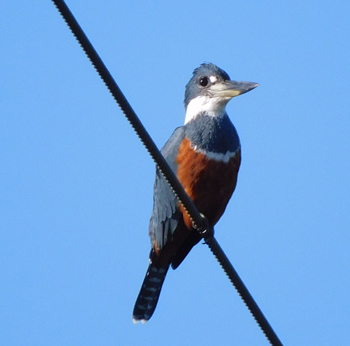
by Robert Parsons ©Robert
Parsons
|
The name halcyon
itself comes from the Greek goddess, Alcyone who was married to Ceyx. According
to legend the couple was happily married but made the mistake of calling each
other Zeus and Hera, which angered the real god Zeus who in bad temper killed
Ceyx by sinking his ship with a thunderbolt.
On hearing this,
Alcyone, wrought with grief, threw herself into the sea and drowned. Out of
compassion, however, the gods later changed them both into beautiful flashing
blue halcyon birds named after her and recognized in the kingfisher’s scientific
name of Alcedo, after Alcyone.
In Irish folklore
it is said that dead kingfishers preserved in a dry place will never decay and
if put among clothes and other articles, the dead birds will preserve the
clothes from moths and give them a pleasant odor. Another old folk tradition
in Ireland and Britain describes how a dead kingfisher hung by a thread from a
post will always have its beak pointing in the direction of the prevailing wind.
Shakespeare refers to this in King Lear, when he wrote:
Bring oil to
the fire, snow to their colder moods;
Renege,
affirm, and turn their halcyon beaks
With every
gale and vary of their masters
So, whether you can catch the colorful
noisy Ringed Kingfisher along the Rio Grande River in Southern Texas, or sit and
study our more common Belted Kingfisher, enjoy these wonderful birds as much as
you can.
Sources
1. South
Dakota Birds, Birding and Nature. Dakota Birding Blog.
2. Audubon
Online Field Guide—Ringed Kingfisher
3. Texas
Breeding Bird Atlas—Ringed Kingfisher
4. Whatbird—Ringed
Kingfisher
5. The
Irish News. July 12, 2020
6. www.allaboutbirds.org
7. “13
Bird Superstitions.” ca.audubon.org July 13, 2012
8. “Eight
Facts about Kingfishers.” Scottish Wildlife Trust. Scottishwildlifetrust.org
9. Birds
of the World.
Cornell Bird Library on-line version.
10. The
Sibley Guide to Birds.
Second Edition. Sibley. Page 307.
11. A
Guide to the Birds of Costa Rica.
Stiles and Skutch. Page 237.
12. Complete
Birds of the World.
National Geographic. Harris. Page 178.
13. The
Crossley ID Guide—Eastern
Birds. Crossley. Page 292.
14. Birds
of Peru.
Revised and Updated. Schulenberg, Stotz. Page 256.
15. Birds
of Mexico and Central America.
Perlo. Plate 52.
16. Birds
of Europe.
Second Edition. Svennsson. Page 238.
17. Poems
and Prose.
Gerard Manley Hopkins. Penguin Classics. 1985.
| Photos by |
Robert Parsons
Executive Vice President and
Chief Financial Officer
Exclusive
Resorts |
|

